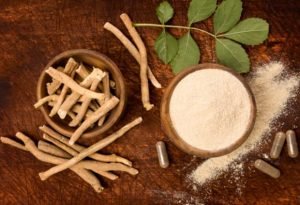
by admin | Jan 7, 2022 | Fitness
Holiday Binging – How To Avoid Weight Gain
The holiday season is a time of joy and celebration. There are holiday parties, holiday dinners with family and overall, it’s holiday treats galore!
It’s practically inevitable that you will gain some weight during the holiday season – especially if you’re not careful!
In this blog post, we’ll discuss how to avoid weight gain during the holidays so that your hard-earned progress doesn’t go down the drain!
How Do You Gain Weight, Actually?

Alright, if we try and get down to the core of it all with fundamental analysis, we can conclude that there is a specific reason why you gain weight…
Okay, okay maybe that was a too complex way to say “overeating causes weight gain” … But the point is this – If you manage the amount of food, you can eat any food type you want.
So essentially, if you consistently go way above your daily needs for maintenance, you will gain weight.
And though that happens, one must remember that just a small percentage of the weight gained during the holidays is fat.
You also gain:
- Muscle and liver glycogen (stored carbs)
- Water
- Food weight
So here’s for a mental checkpoint – Don’t stress out for a couple of pounds gained.
Focus on long-term habits!
Let Your Soul Loose
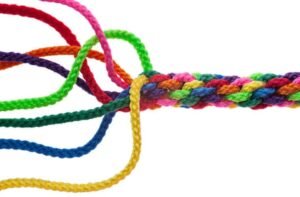
There is a tendency for people to fall so seriously into diets and nutrition plans that their entire perspective on food is warped.
This is exactly when one may be worried about overeating for a couple of days during the holiday.
However, if you give your soul some more food than what your body needs and you are mentally okay with that and don’t feel guilt, you can, in fact…
Leverage The Binge!
Yes, that’s right – Binging on food doesn’t necessarily have to mean gaining a bunch of unhealthy weight.
Think of the binge as an abundance of energy, which can be used for physical activities that will stimulate the body in a good way.
In short – Stay active and train intensely during the holidays, when your food intake is higher.
Here Are 5 More Tips To Control Binging
If you have a really big problem with self-control, holiday binging can truly get out of hand…
And though that is true, there are ways to manage your cravings!
Check out these tips below
The human stomach was made to digest almost anything and everything, but nevertheless, the different nutrients get chemically digested in different parts of the digestive system.
For this reason, eating your nutrients sequentially in each meal may improve the feeling of satiety, as well as overall digestion and gut health.
Simply – Whatever holiday food you are eating, eat first the carbs and veggies and then move on to protein and fat sources.
If the foods on the table mix all nutrients together, however, fear not! Just chew the food longer, as that will ease the work of your stomach.
- Eat plenty of protein and fats

If you want to avoid overeating, you NEED to be satiated and not think about food.
And well, that is only possible through quality proteins and fats, mainly from animal sources.
However, though animal sources do provide proteins and fats that are satiating… the most satiating food you can eat is…
Yes, you heard it here first – If the holiday dinner table has potatoes to offer, don’t be afraid to combine them with anything else you have on your plate.
In doing so, you will increase satiety and make it far less likely to overeat and gain excess weight as an end result.
To Wrap It Up
Managing your holiday eating habits doesn’t have to be difficult, nor do you have to gain excess weight.
Stay active, stay mindful, and if you happen to eat more food – Use that energy!

by admin | Jan 7, 2022 | Mind
why are habits important
Habits – What They Are And Why They Matter
- Origin, Explanation And Why They’re So Important
- Throughout evolution, many different factors have been responsible for our development.
- Everything from our geological position, surrounding species, and the weather have played a huge part in how we now function and think.
- However, a lot has changed since then, and that is not something to ignore.
- Today a big part of what forms our way of thinking stems from our childhood.
- Ever since our birth, we learn through repetition, and this is precisely how habits are formed and strengthened.
- In this article series we explain in detail everything about them – from how they started to how to make them work in our favour.
So, What Are Habits?
A habit is a learned behavior or sequence that has become reflexive overtime and therefore does not need a conscious command or intent.
What’s important about habits is that they are learned through time and can be made into completely automatic processes.
However, maybe their most distinctive feature is that they’re mainly dependent on previous repetition, and that’s why doing them often, is the easiest way to make them a part of our brain.
The part of our brain that’s active when we’re doing something out of habit is called the basal ganglia.
It’s interesting to note that this is not the same part responsible for decision-making (the prefrontal cortex).
Within the basal ganglia of the brain, there are two different pathways through which we reach our habits- associative and automatic.
The associative pathway is connected to actions leading to food, warmth, shelter etc. – it’s basically everything from habits to instincts.
The automatic pathway is where often repeated actions are stored like brushing teeth, putting on shoes etc. – this is for the habits we learn through repetition and positive reinforcement.

This is the most basic explanation of how habits are formed, and it consists of three steps – a cue, a routine, and a reward.
The cue is the trigger for the behavior itself, and it’s mainly connected with location, time, previous action, or emotion.
Think of it like walking past the bathroom in the morning and brushing your teeth – this can be because of your place in the apartment, the morning hour, the fact that you just got out of bed, or that you still feel sleepy and want to wake up.
Next is the routine – this is the initially conscious actions that turned into habits.
We can use drinking coffee as an example – a lot of people start drinking coffee because they’re tired or bored at the beginning (completely aware of the reasons and their actions) and end up forming a habit out of it through repeating the same thought process every day.
The final thing is the reward – this is pretty self-explanatory.
Habits are easily made through because of the rewarding feeling afterward.
For example, when you cook for yourself every night, you receive some free time throughout the next day and make this into a habit.
Why They Matter So Much
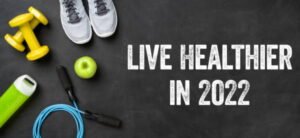
Taking your meds, exercising, keeping a healthy diet and regular sleep schedule are all thanks to the formation of habits.
Positive actions and thoughts tend to avalanche and the same is true for repeating behavior – once you start it’s much easier to keep going and this leads to a better physical and mental state.
Healthy habits also lead to a better perspective on life – once you start taking care of your body, it’s much easier to boost your confidence and start working on your goals.
It’s also worth mentioning that habits improve your day-to-day life because they’re essentially little boosts of serotonin, which are always welcome.

From an evolutionary standpoint, this is why habits were formed.
When you do something automatically you can keep your active focus on something else and still be successful in both.
By forming the habits you need and want, you will have the energy to achieve more complicated actions.
It’s also important to mention that they save up time – once you’ve turned habits into automatic processes, you can do two or more things at the same time without it being detrimental to the results.
So, Think Of It This Way
Habits have been a part of our brain processes forever and for a good reason.
They help with survival, and they make many actions less taxing on the brain.
Habits also promote a healthier lifestyle and an easier and more enjoyable experience both from day to day and long term.
In the second part of this series, we explain how to improve the habits we already have, get rid of negative ones and even build some we’ve always wanted to.
Stay tuned!
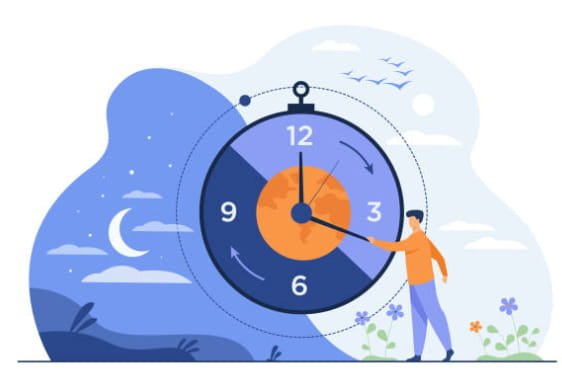
by admin | Jan 7, 2022 | Mind
Habits – How To Build Them
- Tips And tricks On Making New Habits And Improving Old Ones
- As we explained in the previous article, habits are completely or semi-automatic actions that are learned through repetition.
- We have always relied on habits up to a certain extent, both for ensuring survival and predisposing advancement.
- Habits now however are so important because they affect our daily lives – in fact for some people they’re pretty much the building blocks of their lives.
- This is why it’s crucial for them to be beneficial for us and to provide the right kind of push in the direction we want.
- Here’s why we believe it’s important to know how to manage your habits and why we created this list.
- It holds three different categories of actions that are sure to help in bettering your habitual behavior.
- Firstly you need to choose an action you would like to improve. We suggest spending a little bit of time every month thinking of your habits in general and separating them into the three categories listed.
Improving Already Existing Habits
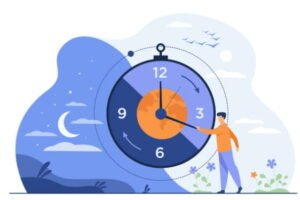
- Once you have chosen one thing you want to improve for the month, try searching for ways in which this can be done and start writing some ideas down.
- They should fit your lifestyle and ideology and be focused on small actions.
- It’s easy to get overwhelmed by shifting everything you do regarding the habit, and the idea here isn’t for it to be difficult but rather enjoyable.
- Once you have decided the method that will positively affect you, try it for two weeks to see if it works and track your process and progress.
- This means to pay attention to how much time the new way takes, how it makes you feel and how much resources it uses compared to the past one.
- If everything looks good, you can keep enforcing this new way of doing things by rewarding yourself with something little every time you do so.
- Soon enough, you will be straight on your way to habitual improvement!
Getting Rid Of Old Habits

Firstly we should clarify that you never simply remove a habit. You replace it with a different one.
With this in mind, the first step to changing behavior you don’t like is to think of what you would like to do instead and work in that direction.
Now that we have set a goal, the next very important thing is to get rid of as many triggers as possible.
As we explained in the previous article, triggers, or cues, are the initial connection we have made with the action (for instance, getting coffee each time on your way to work because you always pass by one exact coffee shop).
It’s much easier to fight bad habits if you’re not in the environment that sets them off.
Another thing you can do is visualize your desired behavior and search for cues that can lead to it, as well as an environment in which it can flourish.
Surrounding yourself with people that have the habits you want and finding those that want to improve in the same way you do is also very useful mainly because one group leads by example while the other one supports you throughout your journey.
Finally, it’s imperative to accept that you will slip up some time but that that doesn’t mean you should stop trying or haven’t changed – these things take a lot of time and effort and if you put in the work, you will reap the rewards,
Making New And Better Habits

It’s never too late to start doing something you want, and this category is just for that.
When forming a new habit, it’s essential to know why it brings you happiness and how it improves your life. Once you have these answers, you can start to change your behavior.
It’s effortless to connect new habits to ones you already have because this builds on an already-existing pathway.
It’s important to note that in order to make a new habit fast, you should consciously clear any obstacles that stand in your way before you start – that way, you won’t be taken by surprise with a negative aspect of your actions and you’ll have already put in some effort so it will be easier to find the motivation to keep it up.
The final mandatory aspect is to reward yourself for each time you have worked in favor of your desired behavior.
This one simple step is a real game-changer and should never be neglected because it helps your brain in solidifying the connections you want and keep working in the direction in which you want it to.
Habits are a huge part of us, and that’s a great advantage.
We are in charge of something powerful and can make our lives much easier and happier overall.
Although some people don’t like to be responsible for such big things, they’re the easiest and smartest way to become what we would like to be.
Habits are not easy to break or to build, but the effort is always worth it in the end because they can improve every aspect of your life you want, and if they’re sustained, they last forever.
With all of this in mind, we know it’s crucial and helpful to try and improve your habits, and you can do so while having fun and finding out new great parts of the world and yourself.

by admin | Jan 7, 2022 | Mind
Getting Back On Track After The Holidays
The holidays are a time for celebration. It’s also a time to indulge in all of the delicious food and drink that we’ve been waiting all year long to enjoy!
The holidays can be hard on your waistline, though.
Luckily, a short slip won’t ruin everything for years ahead, so in this article, we will tell you exactly how you can get back in shape after the holidays if they took their toll on your body!
But first…
How Can You Prevent Gaining Weight?

It is a common belief that gaining weight around the holidays is inevitable…
But really, if you re-frame the whole thing, you may actually reap benefits from all this extra food you’re getting.
Read our article “How to avoid weight gain” to get more insight on how to:
- Prevent weight gain around the holidays
- Control binging
And well, if that didn’t help or it’s too late, follow these 5 tips to get back in shape after the holidays!
Post-Holiday Rebound Tips
#1 Calm Down!

Holidays have the ability to relax the body and mind so much that we become overly indulged in consumable goods.
Don’t let that translate into your day-to-day eating habits, though!
Get back on track with your nutrition and focus on:
- Animal products
- Grains and root crops
- Vegetables
- Fruits
Eat just enough to feel properly satiated and avoid binging and overeating.
#2 Use That Energy

Once you’re back on track with a consistent meal plan, you should also consider putting the nutrients from that food to work!
Get more active, lift some weights, run some miles, stretch and mobilize!
Eating good food and spending time in the gym is an investment in your body composition.
#3 Increase Protein & Quality Fat
As we mentioned in the previously referenced article, you have to feel satiated in order to avoid overeating and stay on track with your plan.
To be satiated, consider adding quality protein and fats from animal products, or, if you are plant-based, a combination of grains, legumes, and other plant sources of protein.
These are the most satiating nutrients, so don’t miss them out!
#4 Focus On The Long Term
One of the most important factors is to remember that a little slip during the holidays won’t have a big impact on long-term progress if you don’t let it.
Swipe away the feeling of guilt from your mind and focus on the important things for your shape and performance – Training well, eating well, and sleeping well.
#5 Stay Disciplined
Focusing on the long-term, bigger picture of your physical development, you may come to realize that motivation is usually short-lived.
Especially after the holidays are over, people start setting goals like “new years resolutions”.
Those are generally accompanied by a spike of motivation that doesn’t really last long.
Instead of seeking motivation to do what you have to do, develop discipline and accept that fitness is about establishing a consistent set of body-nurturing habits.
Take-Home Message
The holidays are over and it’s time to get back on track with your diet.
You can do this by making small changes, like following a meal plan or starting an exercise program.
If you need some help coming up with these plans, we have resources that will guide you through the process of getting into shape after holiday binging.
We also offer nutrition coaching services as well as fitness training for those who want professional guidance from experts in the field.
For more information about what we have to offer contact us at ____@_____com today!
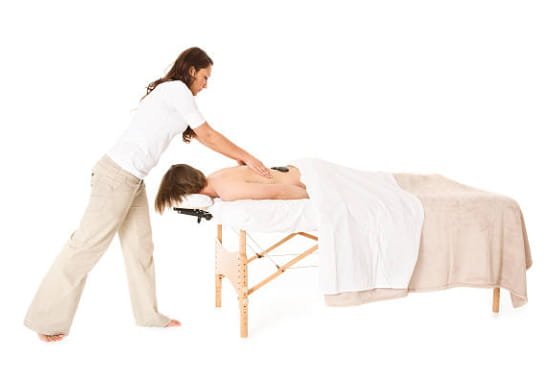
by admin | Jan 7, 2022 | Massage
Full Body Massage
A full body massage is one of the most commonly applied techniques for therapy. Many of those who have tried it have claimed that it does balance and relax the entire body, leaving the person feel both physically and mentally soothed.
Well, a full body massage is a system of stroking, pressing and kneading the different areas of the body to relieve pain, stimulate and tone, as well as relax the body. All of these can actually be attained as full body massage works deeply into the tired muscles, allowing the body to release toxins that were trapped within the systems.
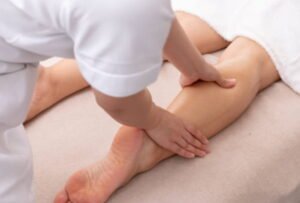
Perhaps what’s more worth noting about full body massage is that it does much more than create a pleasant sensation on the skin.
Numerous reports have noted that although the massage soothes the skin and affect the muscles just under the skin; its benefits may even reach the deeper layers of the muscles. Chances are, the organs of the body themselves will also be affected, significantly.
More to that, a full body massage stimulates blood circulation. Experts have further revealed that this therapeutic practice may aid the lymphatic system of the body, which actually runs parallel to the circulatory system.

A full body massage, as the name implies, includes massage of all parts of the body, from head to toe. However, of all the parts involved in the massage, it is basically the back that needs the largest amount of time to be pampered. Well, this is partly because the back represents such a large part of the body, and it is the very common place for people to accumulate tension.
Aside from the back, another area of focus in a full body massage is the neck and shoulders. These parts are the common areas of soreness and tension, so most therapists focus more on these parts than the other areas of the body. Also, to have the pain and tension eased away from the neck and shoulders can be a source of great pleasure.
The chest also needs attention but rarely these days is it included in massage. Some therapists will massage the decollate and upper chest area over the clavicle etc. Usually, when massaging the chest, the massage therapists change their position from time to time to make the receiver comfortable with the massage.

After the chest, the abdomen becomes the focus of a gentle touch. Again, it is often sadly excluded from many massages and yet requires focus and attention. It is however important to have a very good knowledgeable therapist for any abdominal massage.
As you may know, the abdomen is the softest and least protected area of the body. Given this fact, it’s no doubt that the abdomen is also the area of great vulnerability for many people. So, when massaging this part for a full body massage, therapists need to work very gently and rhythmically, only increasing the pressure once the receiver feels relaxed and secured.
There are also the lower parts of the body, including the legs and feet that need to be pampered with a full body massage. Massaging these areas will ease the pain and tension present and revitalise in the long run these weight-bearing parts of the body. The people who usually find a legs and feet massage useful are those whose jobs entail a lot of standing, like the sales ladies out there in the malls, or people on their feet a lot like nurses and mums, but also active sports people like footballers and dancers.
Going back to the upper part of the body, a full body massage involves massaging the head and face of the receiver. Many find the amount of tension they hold here a bit surprising, particularly around the jaw, but many have said that it’s a pleasurable experience. But unlike the other parts of the body, these areas are often ignored in a full body massage.
Finally, a full body massage involves work on the arms and hands, which are constantly used throughout the day. When these parts are touched, tension faded, leaving the person relaxed and with an improved sense of well-being.
I personally have always found the full body massage essential in maintaining a good state of well-being – I suggest you try it at least once to see these amazing benefits.

























